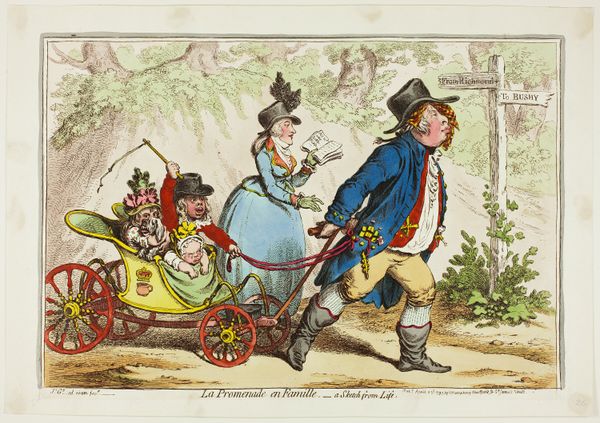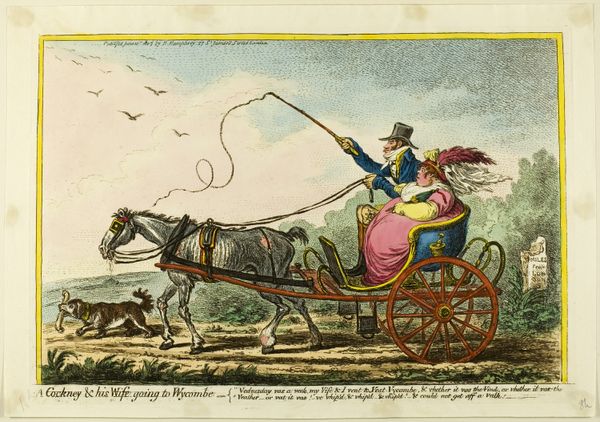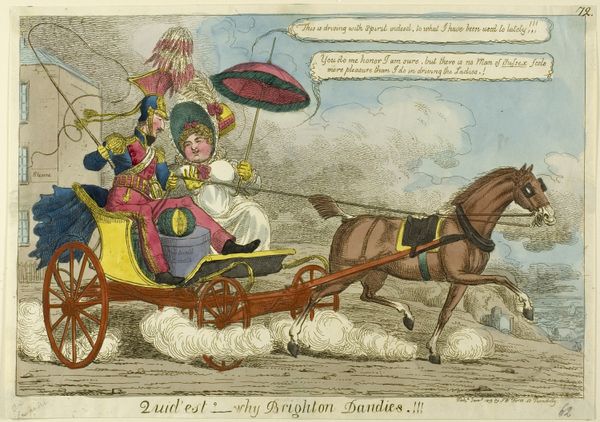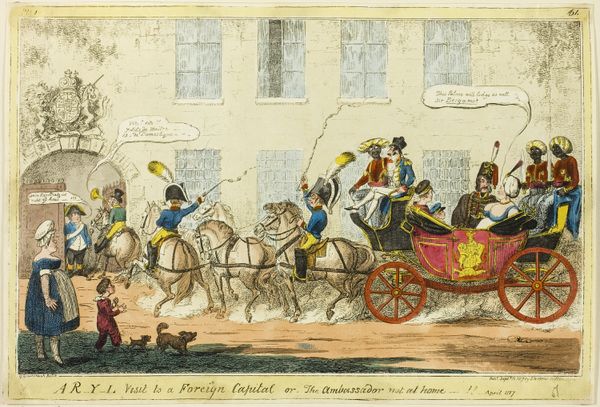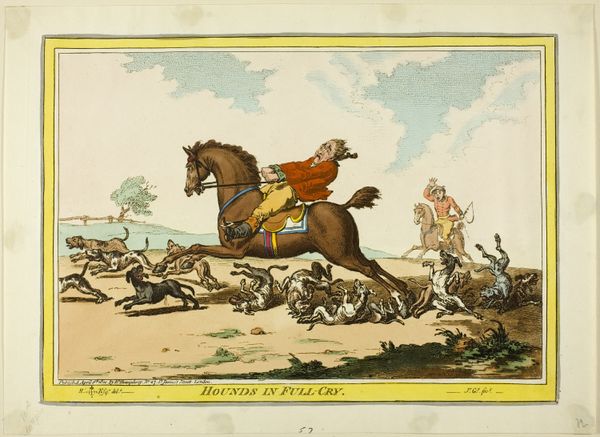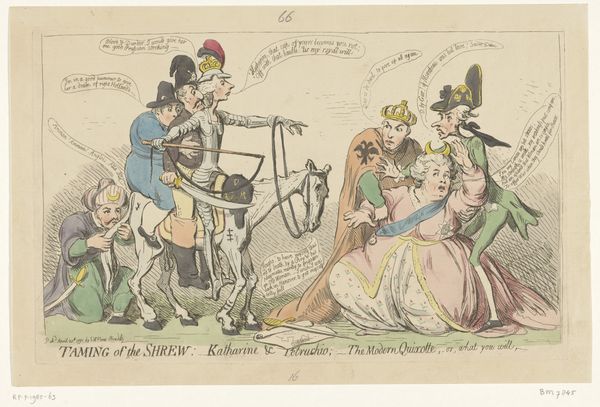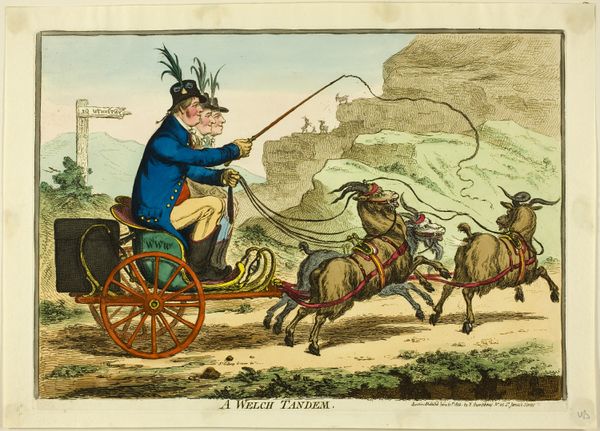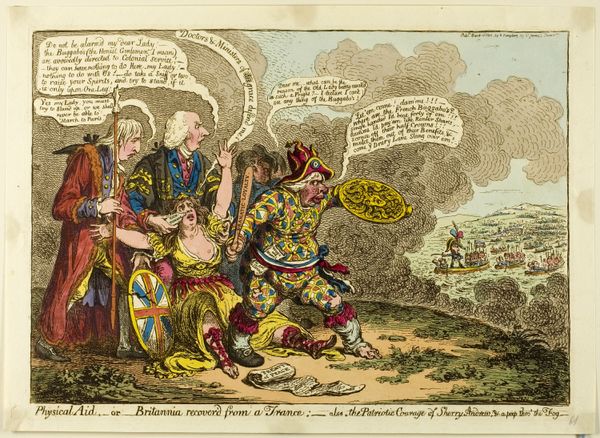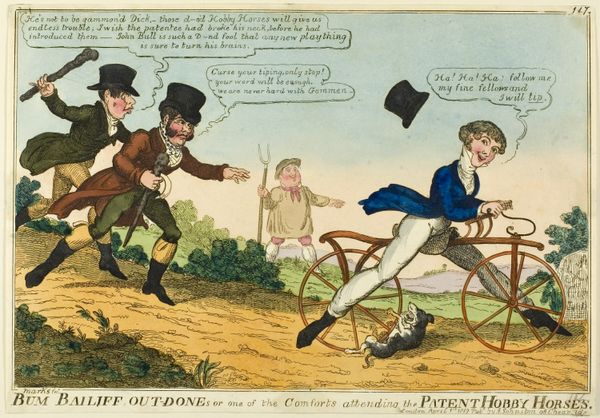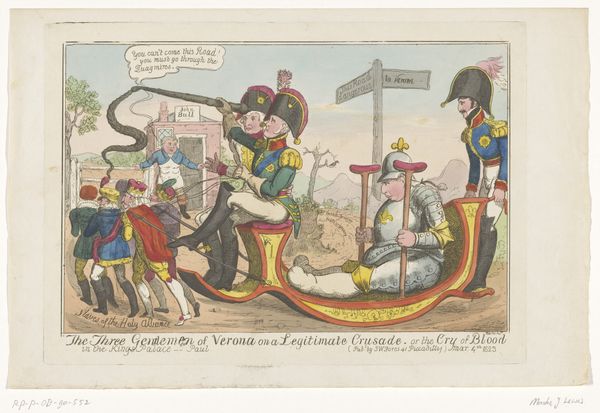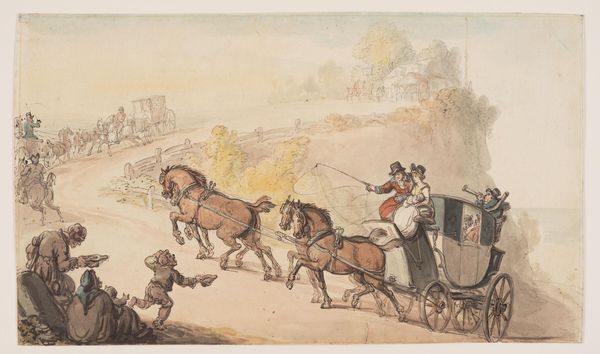
drawing, print, etching, paper
#
drawing
#
narrative-art
# print
#
etching
#
caricature
#
figuration
#
paper
#
romanticism
#
line
#
genre-painting
#
history-painting
Dimensions: 250 × 355 mm (image); 257 × 360 mm (plate); 285 × 397 mm (sheet)
Copyright: Public Domain
Curator: This print, "One of the Advantages of a Low Carriage," possibly created around 1801 by James Gillray, provides a biting commentary on British society. Editor: The chaos is immediate, isn't it? Someone's flat on their face, a dog looks ready to attack, and figures are flailing off a carriage. There's a strong sense of disorder and indignity conveyed through the line work and exaggerated expressions. Curator: Precisely. Gillray was a master of political caricature. Here, he uses etching and drawing to satirize the aristocracy and ideas of social mobility. Notice the crest on the carriage—it implies a certain status, made all the more absurd by the complete lack of control exhibited. Editor: The central event seems to mock ideas of propriety. It makes me consider the lack of social security for many during that period. Are these really advantages or pitfalls to avoid? I’m intrigued by the figure inside the carriage shouting for ‘John!’ —a class commentary? Curator: Good point. “John,” presumably a servant, is noticeably absent or unable to assist, thus spotlighting class division and the perceived incompetence, or perhaps the superfluous nature, of those in service. The “advantage” here is clearly sarcastic. It highlights the supposed benefits of a ‘low carriage,’ close to the ground—allowing for such spectacular and public humiliations when accidents occur. Editor: I like how you contextualize the artist's political agenda! Also, observing this today, one has to wonder whether such critiques led to social change? Does art like this actually lead to changes in how the wealthy behave, or, more generally, society? What sort of responsibility did artists have then? Curator: Gillray's work was immensely popular, so I am sure it informed public sentiment. It reflects widespread concerns about societal excesses and questions the perceived authority of those in power. We can assess how art and institutions shaped the conversations on those subjects. Editor: So it seems “One of the Advantages of a Low Carriage” encapsulates both artistic skill and biting socio-political critique! It challenges us to re-evaluate hierarchies— both in 1801 and even in our present. Curator: Indeed. Gillray offers us a historical window into how visual culture can actively engage in conversations about power and social structures, providing context for modern critical theory.
Comments
No comments
Be the first to comment and join the conversation on the ultimate creative platform.
